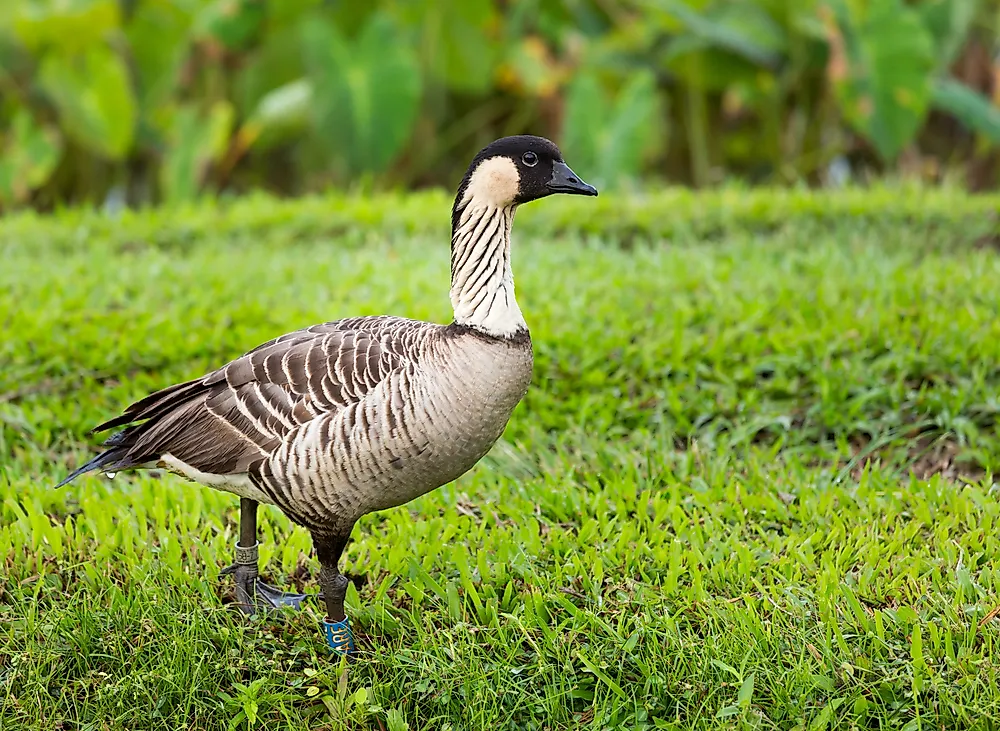What Is The Hawaii State Bird?

The nene, also known as the Hawaiian goose, is the state bird of Hawaii. It was designated the official status in 1957. The nene is believed to have evolved from the Canada goose because of the striking resemblance between the two species. The nene has a black head, face, bill, and crown; a buff-colored neck, a gray or brown plumage, and black feet. Adults can grow to 25 inches long. Wild populations of the bird are found in the islands of Hawaiʻi, Molokai, Kauaʻi, Maui, and Oahu.
Endemic To Hawaii
The nene is one of the 63 species of birds endemic to the island of Hawaii. Wild populations are only found on the Island, making the bird the rarest goose in the world. Researchers and archaeologists believe that a flock of Canada geese landed on the island of Hawaii during migration and were unable to rediscover the migration route. The climate was hospitable and the birds no longer needed to migrate. The nene adapted to the environment and gradually evolved into a new species over thousands of years. The wings became shorter as the bird no longer needed to fly long distances and the webbed feet evolved to half-webbed claw-like foot suitable for gripping rather than swimming. The upright posture and the adapted feet allowed the nene to walk on the lava surfaces.
An Endangered Species
The nene is one of at least nine species of geese that landed on Hawaii Island. Eight evolved to be flightless and became easy targets for predators. Only the nene retained the flying ability and survived. The birds thrived on the island, feeding on leaves, flowers, seeds,and berries. Humans settled and began hunting the birds. Mongeese were brought in from Jamaica to control rats on sugar cane plantation but ended up hunting the birds. Their population began dwindling, and by the 1900s, only a few scattered flocks remained. In 1911, conservationists began rallying for the conservation of the birds prompting the authorities to enforce a ban on hunting. Despite conservation efforts, mongeese, feral cats and dogs, wild pigs, and other predators, continued preying on the birds. In 1957, Hawaii declared the nene the state bird in a bid to educate the public on the importance of preserving the natural environment and the native species. The goose was added to the Federal List of Endangered Species in 1967. About 2,000 birds remain in the wild with about 500 inhabiting the Big Island.











